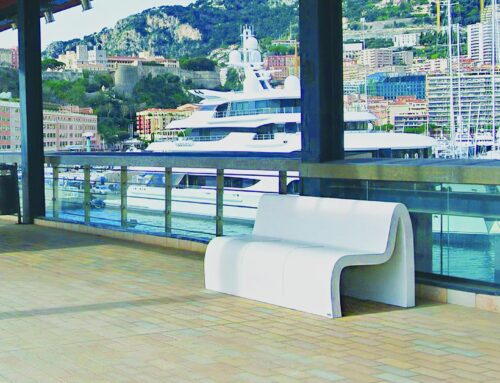The concept of inclusive design is becoming more and more central to the design of urban spaces. This approach aims to create accessible cities and environments usable by all people, regardless of their physical, cognitive or sensory abilities.
But exactly what does inclusive design mean? And what are the principles that guide this movement? We explore these aspects through the projects of LAB23, an Italian company, leader in the urban furniture sector.
What does inclusive design mean?
Inclusive design is a design approach that considers the different needs of users from the very beginning of the design process.
The aim is to create products and environments that can be used by everyone, without the need for special adaptations.
In practice, it means designing with people with disabilities, the elderly, children and anyone who may have special needs in mind.
But what does it mean to be inclusive?
Being inclusive means recognising and valuing the differences between people. In the context of design, this translates into offering solutions that do not exclude anyone, but rather facilitate everyone’s participation in everyday life.
An inclusive environment is a space where every individual feels welcome and respected.
What are the principles of inclusive design?
They are based on seven fundamental points
- Equity of use: the element must be usable by people with different abilities.
- Flexibility: it must accommodate a wide range of individual preferences and abilities.
- Simplicity and intuitiveness: it must be easy to understand, regardless of the user’s experience, knowledge, language skills or level of concentration.
- Perception of information: it must effectively communicate the necessary information, regardless of the user’s environmental conditions or sensory capabilities.
- Error tolerance: must minimize the risks and negative consequences of accidental or unintentional actions.
- Low physical effort: must be able to be used efficiently and comfortably with a minimum of fatigue.
- Size and space for approach and use: Must provide adequate space for access, manipulation and use, regardless of the user’s build, posture or mobility.
What can be done to promote inclusion?
To promote inclusion, it is essential to take an integrated approach that includes awareness-raising, education, collaboration and innovation.
Raising awareness is crucial to raise awareness about the importance of inclusive design. It is crucial to make people understand that design is not just about aesthetics, but a key element in ensuring that spaces and products are accessible and usable by all.
Educating is the next step, as it is necessary to train designers and urban planners in the principles of inclusive design. Proper preparation enables these professionals to design environments and products that meet the diverse needs of people, including those with disabilities.
Working with communities and people with disabilities is another essential aspect. Working directly with those who experience them enables a better understanding of their needs and the integration of valuable feedback into the design process.
Finally, innovation is key to developing design solutions that effectively meet the needs of all. The creation of new ideas and technologies can help overcome existing barriers and build a more inclusive future.
Now let’s take a practical look at what can be done to make our cities more accessible.
LAB23’s inclusive projects
LAB23 is an Italian company at the forefront of inclusive street furniture design.
For example, its benches are often equipped with backrests and armrests to facilitate sitting and standing up, making these elements accessible to the elderly and people with motor disabilities.
LAB23’s bike stands and information totems are ergonomically designed to be easily used by everyone, including those with physical limitations.
Traffic bollards are also visible and safe for people with visual impairments, helping to create safer and more accessible public spaces.
To find out more about LAB23’s street furniture projects, visit our website.
Inclusive design is not just a trend, but a fundamental necessity, to build a more equitable and accessible society.
Embracing this approach not only encourages greater participation and integration, but also contributes in building a world where diversity is celebrated and every individual has equal opportunities for interaction and participation.






